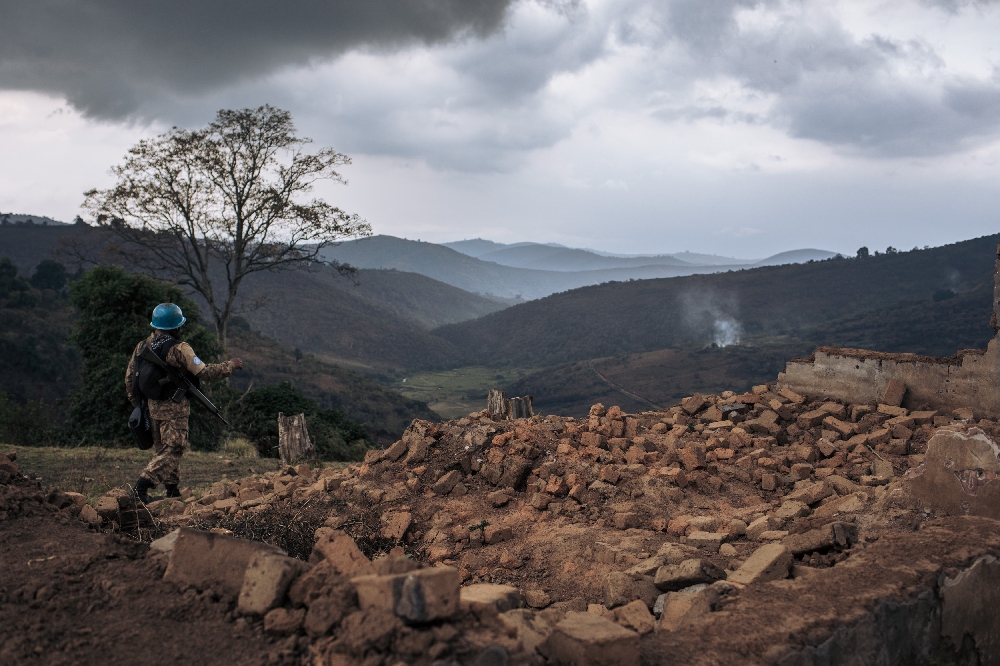Kinshasa (AFP) – Thousands of Banyamulenge people have fled a flare-up of fighting in eastern Democratic Republic of Congo in recent weeks to take refuge in the town of Uvira, on the northern shores of Lake Tanganyika.
The renewed violence is a blow for communities that have been wracked by unrest in recent years as warring militias battle over bitter, longstanding ethnic rivalries.
“People died, houses were set on fire… all our property was taken away,” said Aline Ndariburugwa, one of the roughly 3,000 to have fled the fighting in the Hauts Plateaux region.
Banyamulenge civilians, resented for their role in violence that racked the DRC after Rwanda’s 1994 genocide and suspected of being tools of an attempt by Kigali to destabilise its neighbour, have been targeted by militias known as Mayi-Mayi drawn from other ethnic groups.
Ndariburugwa said Burundian militiamen took part in the attack alongside Mayi-Mayi fighters.
South Kivu province has been the scene of periodic inter-ethnic violence for the past three decades, and April was “the second most active month… since mid-2017,” Kivu Security Tracker (KST) coordinator Pierre Boisselet said.
The KST’s monitoring of violence in eastern DRC, especially volatile North and South Kivu, has shown the situation worsening since late March in the verdant High Plateaux, which overlook Lake Tanganyika and neighbouring Burundi from a height of some 3,000 metres (10,000 feet).
Conflicts variously pit armed groups from the local Babembe, Banyindu, Bafulero and Banyamulenge communities against one another.
But the KST said the latest flare-up “is said to be linked to an incursion of armed men from Burundi in March,” naming the Resistance for the Rule of Law (RED)-Tabara, a militia that first appeared in 2011.
“Violence is cyclical in the highlands, (but) this situation is relatively new,” Boisselet said.
– Martial law –
Violent clashes “have begun to spill over” into neighbouring regions, according to a report from an international NGO seen by AFP.
Militia forces “are out of the control of their communities and the clashes involve extremely violent reprisals,” while crime is growing “at an exponential rate,” the report warns.
In the High Plateaux, armed groups have been reinforced by men from the hinterland forests and the Ruzizi plain on the border with Burundi, an “infiltration point” for foreign fighters, notes a report from another NGO.
Compounding the crisis are inaction by the army, a divided provincial government, civil society groups manipulated by one side or another, a governor accused of embezzlement and dilapidated infrastructure.
President Felix Tshisekedi on May 6 proclaimed a “state of siege” — effectively martial law — in North Kivu and neighbouring Ituri province in a bid to curb bloodshed by the Allied Democratic Forces, a historically Ugandan Islamist group accused of murdering more than 1,000 civilians since November 2019 in and around the major city of Beni in North Kivu province.
The move risks shunting militias and criminals into neighbouring South Kivu, one of the NGO reports seen by AFP warned.
Mathias Gillmann, a spokesman for the UN’s MONUSCO peacekeeping force, said “we are trying to do what we can to protect civilian populations” with a new base in the area.
But the UN troops themselves struggle with “problems of access and the absence of state authorities,” he added.
In the long run, “the solution will come from the communities” themselves, Gillmann said.
For now, eastern DR Congo is plagued by almost 122 active armed groups, and at least 490 civilians have been killed in North and South Kivu alone since early 2021, according to the KST.
The ADF is the bloodiest among the militias, active in North Kivu since the mid-1990s with alleged links to the Islamic State group.
– Legacy of Rwanda –
Over the past three decades, many Congolese have developed a hostile image of the Banyamulenge.
The Tutsi herders with distant Rwandan origins see themselves as victims of discrimination.
But most Congolese associate them with the aftershocks of the 1994 Rwandan genocide against the Tutsi, when the Kivus — and all of the DRC — were plunged into chaos.
Some Banyamulenge joined Paul Kagame’s successful Rwandan Patriotic Front (FPR) rebellion which ended the massacres.
In the DRC, they were active in Rwandan-backed rebellions by Laurent-Desire Kabila’s Alliance of Democratic Forces for the Liberation of Congo (AFDL) and the Rally for Congolese Democracy (RCD).
Kabila ousted president Mobutu Sese Seko in 1997 and led the DRC until he was assassinated in 2001 and replaced by his son, Joseph Kabila.
The conflicts that brought him to power saw numerous atrocities against civilians, while relations with Rwanda swung from alliance to hostility.
Members of other communities formed the Mayi-Mayi armed groups, attacking Banyamulenge civilians in turn and sparking a cycle of violence that continues to this day.
Source: New feed


